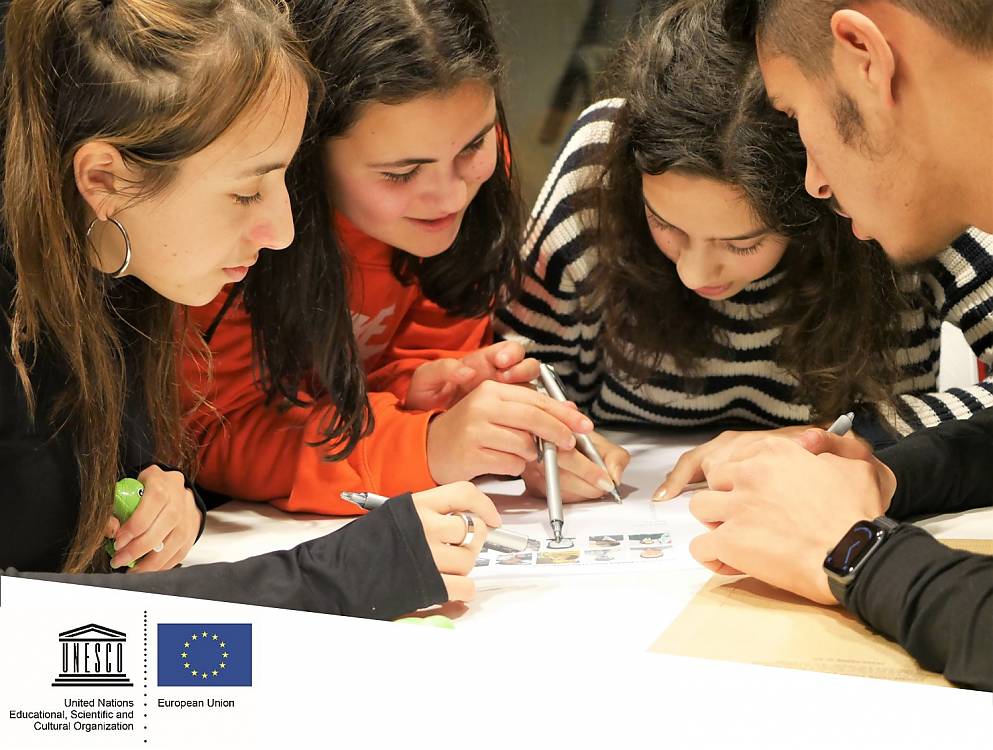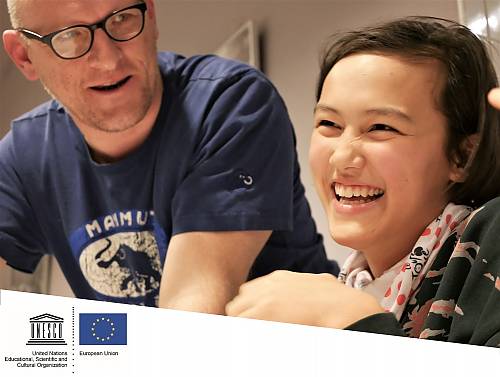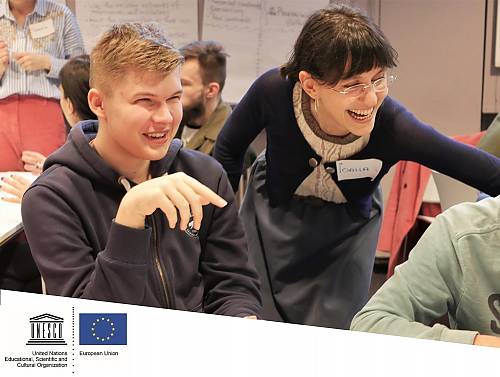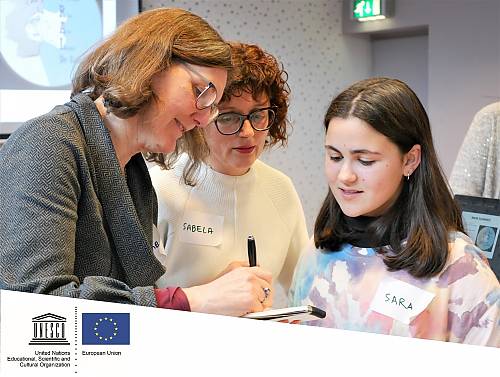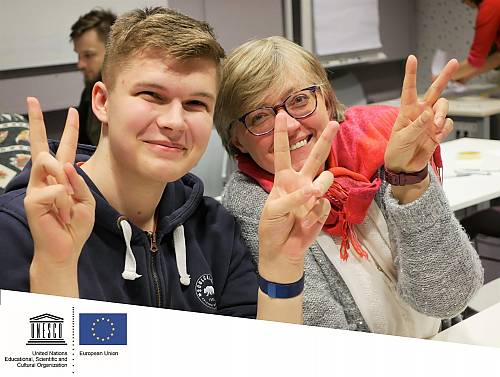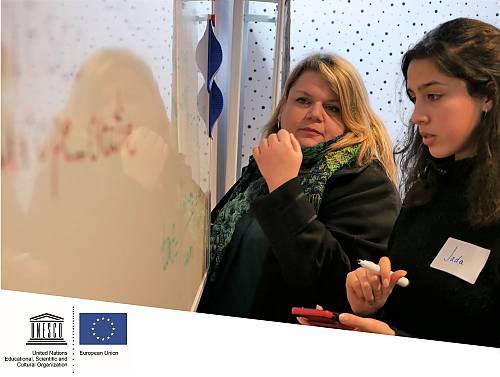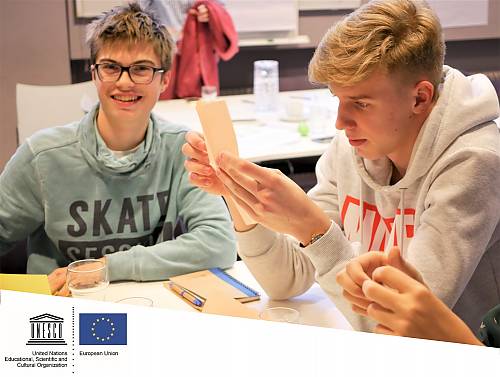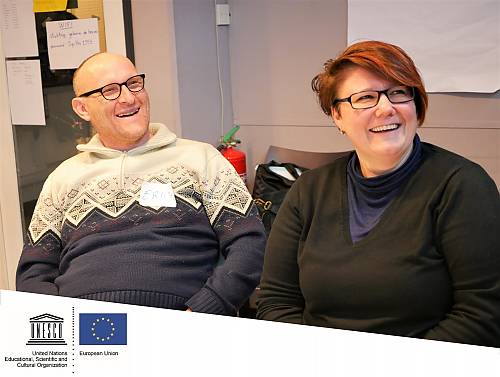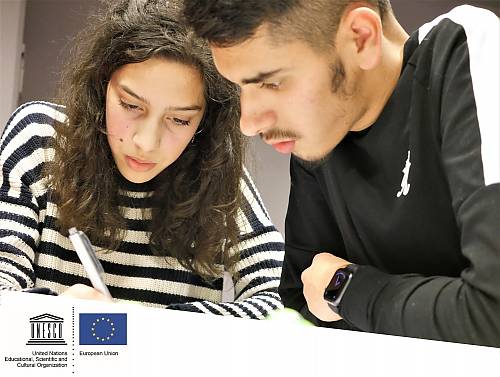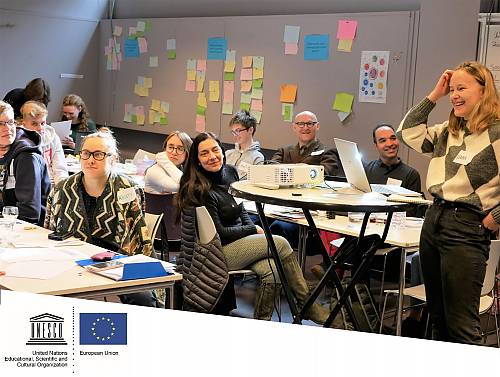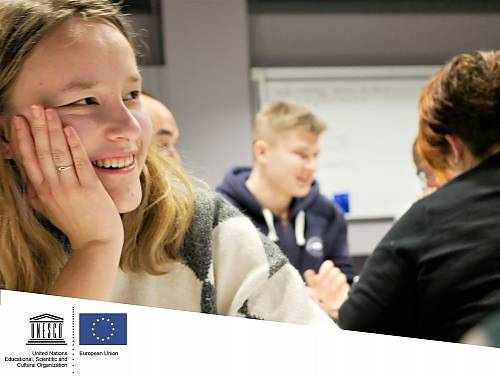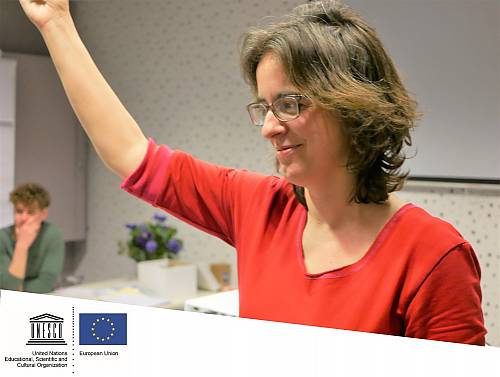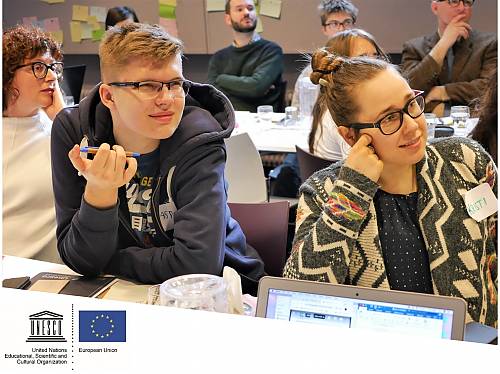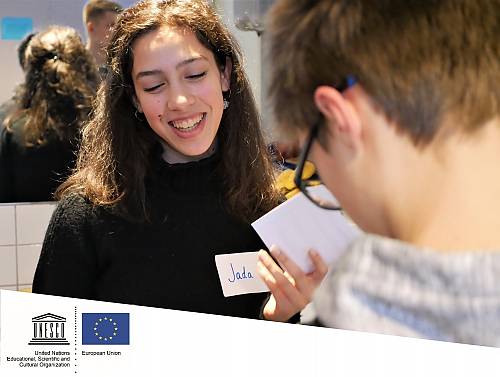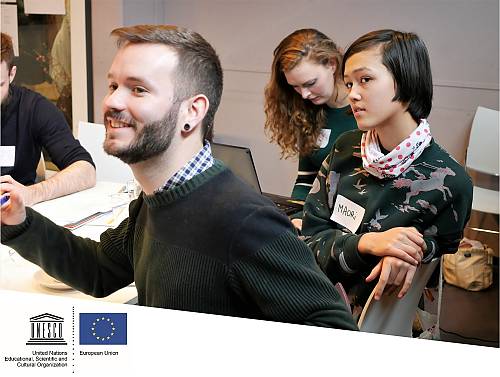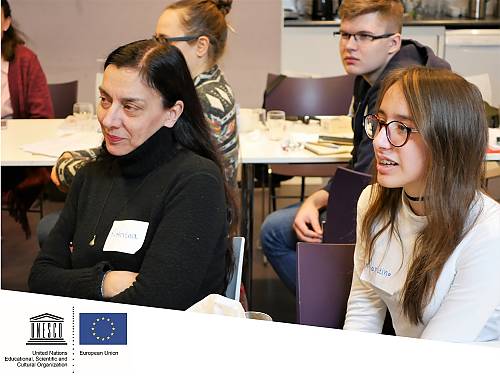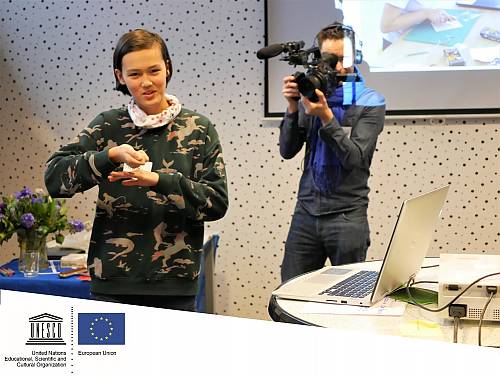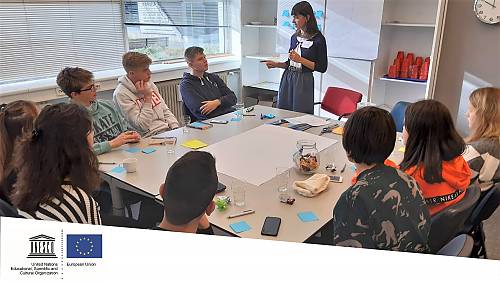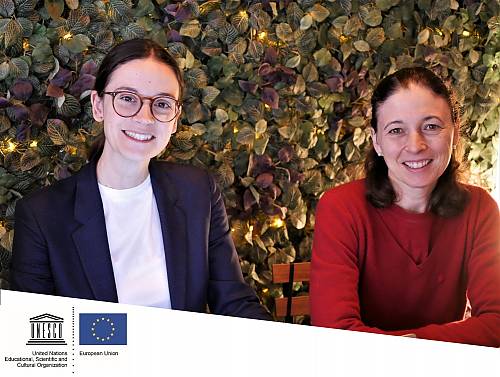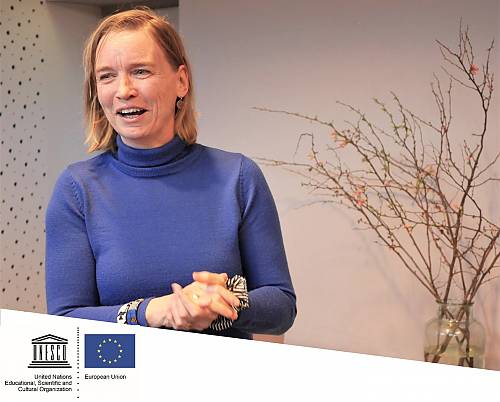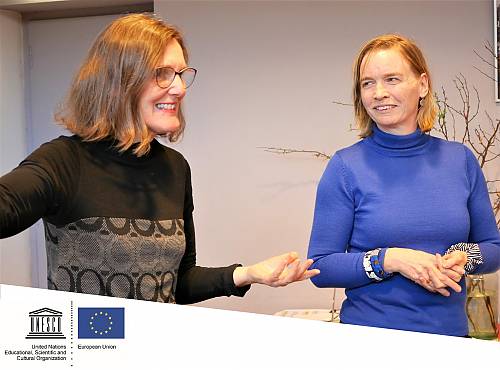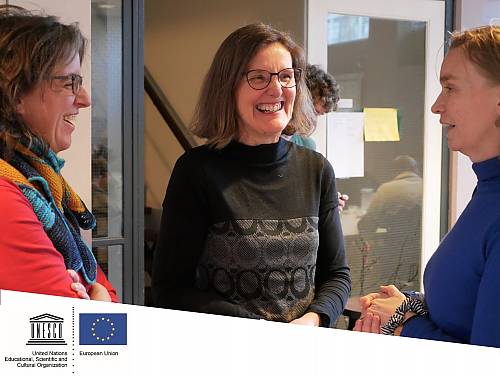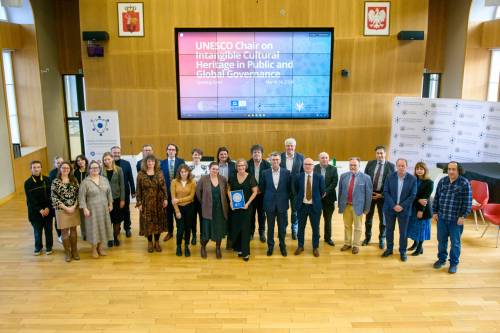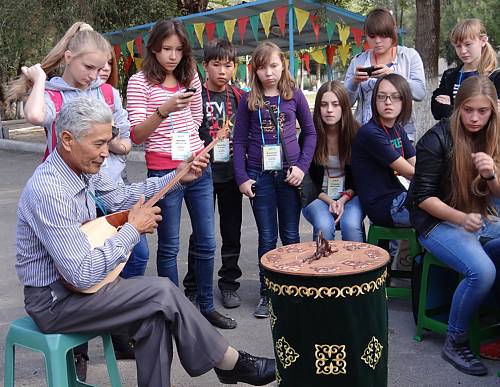“When students are motivated, they achieve better results. With living heritage, learning becomes more interesting, meaningful and motivating for students. It also stimulates innovative teaching methods, which benefit the teacher-learner relationship. It is rewarding to improve the quality of education while at the same time contribute to something larger, like safeguarding our living heritage” – these were some of the conclusions of the workshop ‘Integrating intangible cultural heritage in school-based education.
Lessons learnt from the UNESCO-EU pilot project’, which was organized from 27 February to 1 March 2020 in Rotterdam in partnership with the UNESCO Associated Schools network (ASPnet) and hosted by the Netherlands Commission for UNESCO.
The workshop brought together for a second time the 10 selected pilot school teams from the ASPnet schools in the European Union to share their experiences of teaching and learning with living heritage. As part of the joint UNESCO-EU project 2018 European Year of Cultural Heritage: Engaging Youth for an Inclusive and Sustainable Europe, the school teams worked closely with school colleagues, families, NGOs and local community members to implement original projects integrating living heritage in lesson plans or extra-curricular activities. UNESCO-trained facilitators provided initial training and accompanied the teams throughout this process.
During the four-day workshop, the teams demonstrated how living heritage can be creatively integrated in mathematics, physics, CAD or languages: the Glöcklerlauf bells helped students in Austria to learn about soundwaves in physics, in Cyprus the Lefkara lace served as example in geometry to calculate the angles between two lines, while the traditional kama recipe allowed Estonian students to talk about their traditions in their English classes.
The lessons learnt from this exercise will be integrated in a set of resource and guidance materials for teachers, to be published towards the end of the year. A series of short films, case studies and practical tools will complete the collection.
The 2003 Convention for the Safeguarding of the Intangible Cultural Heritage recognizes the important role that education holds for the recognition of, respect for and enhancement of living heritage in society.
The transmission of intangible cultural heritage through formal and non-formal education is part of the proposed safeguarding measures at a national level. Teaching and learning with living heritage in primary and secondary schools also contributes to attaining Sustainable Development 4 – Quality Education, in particular target 4.7. which advocates for the “appreciation of cultural diversity and of culture’s contribution to sustainable development”.
Project:
-
2018 - European Year of Cultural Heritage: Engaging youth for an inclusive and sustainable Europe (1 January 2019 – 30 June 2021)
- GermanyAustriaBelgiumBulgariaCyprusCroatiaDenmarkSpainEstoniaFinlandFranceGreeceHungaryIrelandItalyLatviaLithuaniaLuxembourgMaltaNetherlands (Kingdom of the)PolandPortugalRomaniaSlovakiaSloveniaSwedenCzechia
